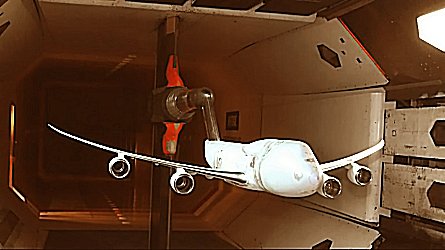Boeing is beginning an intensive three-month windtunnel test campaign on the recently launched 747-8 derivative as it targets a simultaneous design freeze in October for the -8 Freighter and -8 Intercontinental passenger variants.
“We’re trying to do both, and seeing how well we can design both aircraft at the same time,” says 747 chief project engineer Corky Townsend, who adds: “We’re still in the design phase and still doing trades [studies].”

Although the two 747-8 versions will be 90% common, with extensive changes including a redesigned wing, new engines, systems and landing gear and an upgraded flightdeck, the task of a simultaneous design freeze is made more complex by the different lengths of the two variants. The -8 Intercontinental is a 3.5m (11.5ft) stretch over the current -400, while the -8F will be a 5.6m stretch. The freighter is due to enter service first in around September 2009, while the passenger model is targeted for February 2010. Possible new features to be studied in the forthcoming tests include a partial fly-by-wire (FBW) flight control system (FCS), flaperons and drooped ailerons. “We’re looking at it [FBW] for lateral control,” says Townsend, who adds that the system would probably be restricted to the control of some spoilers.
“As we go through the windtunnel tests, we will be looking at things like the high-speed aileron. Do we make it a flaperon? We might also droop the ailerons for take-off, and look at how do you get manoeuvre load alleviation.”
Townsend says the design team is conscious of the pressures of walking the fine line between commonality and new technology when it comes to defining the -8. “The aircraft is a known quantity and just over half of all the 747s in service are -400s. How do we take advantage of that and yet create an aircraft the airlines know is new?”
Some of the tunnel work, at Boeing’s Transonic Wind Tunnel in Seattle as well as forthcoming tests at other sites such as Qinetiq’s tunnel in the UK, will also focus on changes required to meet London Heathrow’s stringent “QC” noise quota rules. “We’ve got the margin to guarantee QC2 departure and approach, and we are really close to QC1, particularly on the passenger aircraft, but we are not yet at the point where we can guarantee it,” says 747 programmes vice-president Jeff Peace. Although externally sharing the same planform as the long-established 747 wing (with the exception of the raked tip extensions), the -8 is equipped with an all-new, aft-loaded, supercritical wing with improved aerodynamics and increased fuel volume.
GUY NORRIS/LOS ANGELES
Source: Flight International
















